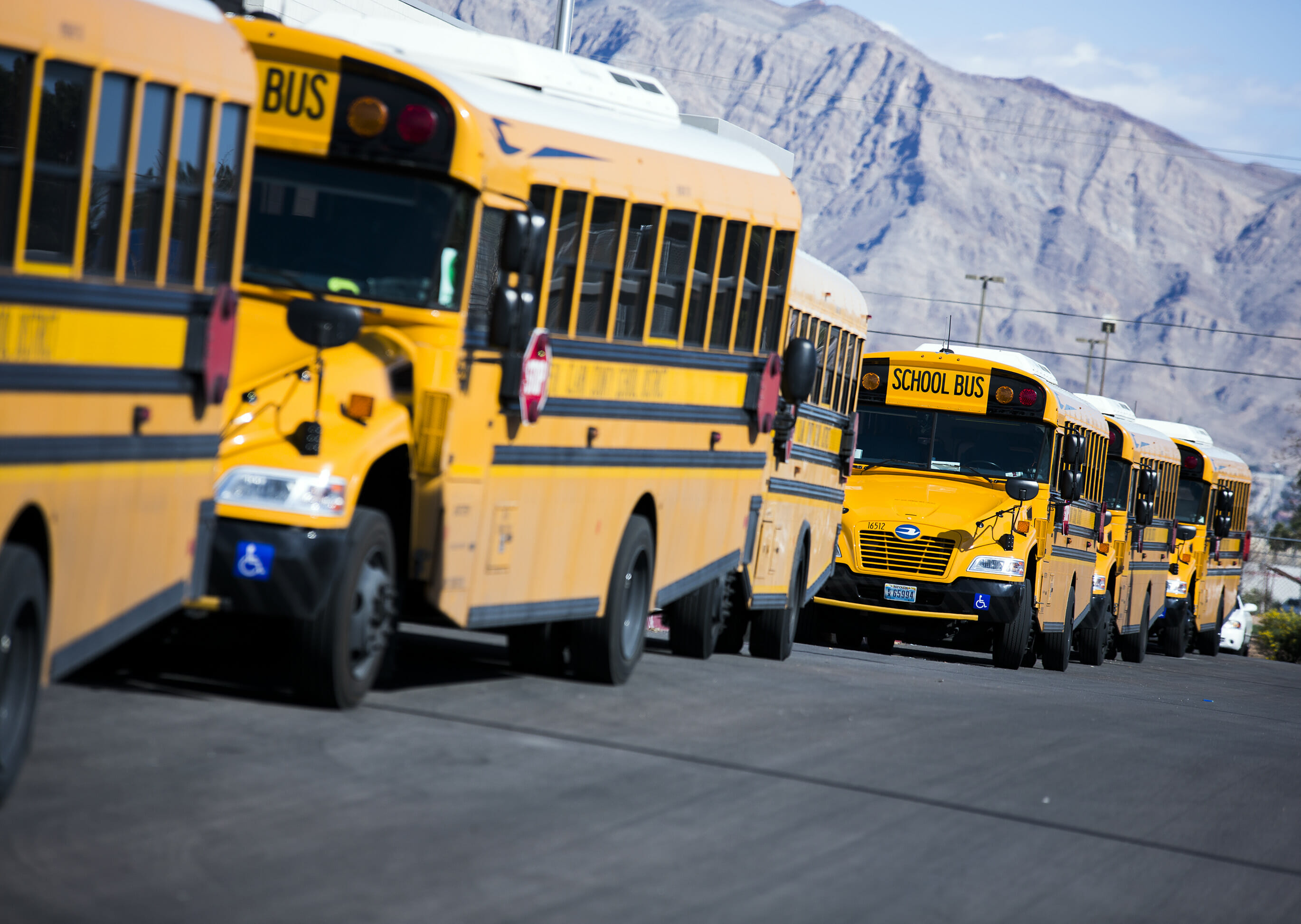What Nevada’s underfunded schools are like

By Steve Gaskill
I’ve never had a legislator visit my classroom. They’re busy people, I’m sure, but as this session wears on and the prospects dim for substantially increased education funding, I find myself wondering whether our leaders realize what underfunded schools look like. Here’s a sampler.
At my school, we started the year knowing that we’d average about 40 students per class. Our classrooms were provided with 37 chairs and eight tables. So, for the first few weeks of class, the teachers in my hallway worked out a schedule in which we would switch chairs between our classes to accommodate the additional students. During a period in which I luckily only had 36 students, I’d send an extra chair for Betty so her extra kids could have a place to sit. Other teachers would send their chairs during their planning periods. We managed to get chairs for all the kids to sit in by essentially playing musical chairs in reverse among all our rooms, without the music.
As a science teacher, I want my students to be able to perform labs. It’s a required part of our curriculum. With 40 students in a class, however, there is not enough lab counter space. What happens in practice is that groups of four students crowd around lab spaces that can physically only accommodate groups of two or three students. That means that at any given time, only half of my students have a clear view of what’s actually happening in their experiments. The other half are left either attempting to peer over or around their classmates or to simply sit down in frustration.
And that’s assuming students can even safely complete the lab. The goggle cabinet in my room is only designed to hold 35 goggles, so I have to rotate spare goggles through the cabinet to make sure they all get sanitized. The goggles themselves are older than the students and are starting to break.
Even with enough safety goggles, however, the overcrowding at lab counters presents serious safety issues as students bumping into each other and elbowing for counter space sometimes results in broken thermometers, broken glassware and increased chemical spill rates. I’ve had more broken thermometers in the past two years than in my entire prior career combined. For lab safety, the National Science Teachers Association recommends that science classes be no larger than twenty-five students. Yet state standards require that I do labs. And I want to do labs. And the kids want to do labs. But no one wants an accident. So what do I do? Cross my fingers.
To get class sizes down, a number of teachers at my school, myself included, volunteered to teach an extra class this year during our planning periods. This had the effect of reducing average class sizes by two or three students. But it also leads to staff burnout.
Sure, I agree to spend extra time outside of class to prepare lessons and grade student work, and I get compensated for some of that extra time (perhaps half of it). But the sun still goes down at the same time, my body still demands the same amount of sleep, and my family still needs a husband and a father. Inevitably, lesson planning suffers, feedback to students suffers, I suffer, and my family suffers. But we managed to get average class sizes down to just under 37 students.
I sit on my school’s organizational team where we work out a budget and a plan of operation each year. We never face any good choices. It’s either lay off teachers and increase class sizes, or petition for more magnet students so we don’t have to lay off teachers, but then we still have large class sizes.
Now that we’re getting more Title I money (which is great for us but terrible for the suburban schools that lost their Title I money), we’d like to hire more teachers, but the additional Title I funding didn’t result in new schools being built, and my school is already using all the classrooms we have. Where would we put additional teachers to reduce class sizes? On the lawn?
I’ll conclude with what doesn’t happen in classrooms. I don’t get extra class time when I get extra students. The bell still rings after 55 minutes, whether I have twenty students or forty. I sat down and worked out the math the other day. By the time I get the class calmed down, take roll, provide a warm-up and review, and teach an actual lesson (and collect student work at the end of class), I have an average of twenty-five seconds (on a good day) per student to provide meaningful feedback.
If I want to sit down and actually help a student, to figure out what the student’s misconceptions are, to work through an intervention, and to make sure the student understands the concept, I have to spend at least a few minutes working with that student. Which means, of course, that the 25 seconds the other students would get simply vanishes.
There are students in every one of my classes who have gone weeks without a meaningful intervention from me. As the days go by, they get frustrated, behavior problems mount — and addressing the frustration and the problems cut into the remaining students’ 25 seconds even more.
And now we hear that the district and the state are probably just going to cut up the funding pie differently in response to it all. Superintendent Jara has already made headlines by robbing Peter to pay Paul. So, my school gets more money to hire teachers without enough classrooms to put them in, while other schools across the valley are losing hundreds of thousands of dollars, which means they’ll eliminate positions, opening up classrooms that will go unused. (I don’t necessarily condemn the superintendent. He really doesn’t have a lot of great options with the level of funding our district receives.)
I’m sure some of our legislators would prefer not to know what underfunded schools are like. It’s so much easier to live in a fantasy where you point to a school or two that happened, purely by the laws of statistical probability, to beat the odds, than to honestly face up to the hundreds of schools that are struggling. It’s so very tempting, I’m sure, to dream up new ways to cut up seven loaves of bread and a few fishes, when all our students and all our schools need more funding.
Other states can find funding for their schools. They’re not content to let their lawmakers end legislative sessions year after year that result in the largest class sizes in the nation. It’s time for political courage and ambitious budgets. Our students can’t keep waiting for broken promises to finally be kept.
Steven Gaskill is a science teacher at Knudson Middle School in Las Vegas.
